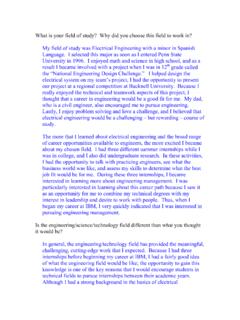Transcription of CUSTOMER SERVICE SKILLS YOU NEED
1 CUSTOMER SERVICE . SKILLS YOU NEED. Phone 4. TABLE OF Support Tickets and Email 6. CONTENTS Chat 8. Social Media 10. CUSTOMER SERVICE SKILLS YOU NEED 3. CUSTOMER SERVICE . SKILLS YOU NEED. Today's CUSTOMER SERVICE involves much more than a conversation on the phone. Web, email, chat, and social media are now very important channels for customers. Still, many customers prefer to contact companies with a phone call. From a company's perspective, the phone is not always the most efficient channel, particularly for larger companies dealing with high volumes of CUSTOMER SERVICE calls. Soft SKILLS for providing CUSTOMER support on the phone, such as empathy, the ability to read a CUSTOMER 's emotional state, social graces, communication, and friendliness remain important, but additional SKILLS for the newer channels need to be developed to make these channels equally or more viable choices for customers.
2 This paper delves into today's main CUSTOMER SERVICE channels and the associated soft SKILLS which make for a rock star agent. Naturally, the SKILLS overlap and can apply to more than one channel. CUSTOMER SERVICE SKILLS YOU NEED 4. 1. Phone Smile, literally. A smile can translate through the phone, causing your voice to sound friendly and warm. But be careful not to smile at a very angry CUSTOMER . Wait until the time is right. Mirror your customers. Try to match their tone and emotion. Mirroring doesn't mean to yell if a CUSTOMER is yelling at you. However, an initial increase in volume or intensity might help the interaction at the start. Then it's important to quickly bring the intensity down. Be yourself, and mirror in the best way you can to create quick rapport. Reflect and validate.
3 When a CUSTOMER is upset or frustrated, they might not be able to take in what you say even when it's the right answer. First, really listen to help them calm down. After saying all they need to say, they're more likely to be receptive to hearing the solution you offer. CUSTOMER SERVICE SKILLS YOU NEED 5. Acknowledge. Tell customers you understand their problem and the reason for their call. Make sure they feel heard. Give the CUSTOMER time. Let customers vent if they need to, even if you understand the issue right away. People often need to finish expressing themselves in their own way before they are ready to proceed. Summarize. Repeat back what a CUSTOMER has told you in a supportive way. This demonstrates that you understand the problem. Communicate hold time. Before you put some one on hold, get confirmation that it's OK to do so.
4 General rule: don't leave a CUSTOMER on hold more than 2 minutes without checking back, even if it's to say it may take longer. If you know it will be an extended hold, tell them ahead of time. Offer to call back, if that's preferable. CUSTOMER SERVICE SKILLS YOU NEED 6. 2. Support Tickets and Email Hone your writing SKILLS . Tickets and email require excellent writing ability. That means writing with clarity, precision, and brevity. Use templates, not boilerplates. Don't use the exact same prewritten text when responding to tickets. Start with a basic, standardized template specific to your support team and personalize it when replying to customers. Inject personality into responses. Feel free to use your own voice and approach. You can reflect the company's persona and philosophy in your own way.
5 Consider using a different signature and closing macro based on the tone and resolution of the interaction. CUSTOMER SERVICE SKILLS YOU NEED 7. Aim for specific times. Make sure all tickets are resolved or escalated within a certain time frame. Time to first reply is critical, so define expectations with your team and with your customers. Systemic alarms and triggers are imperative to ensure that tickets don't get stale. If you get an update from engineering, product, or operations, make sure a systematic process exists to update customers. Don't be robotic. Emails should have personality, reflecting the fact that they come from an actual person. Prioritize. The ability to prioritize tickets while keeping esponse times in mind is immensely important. Mimic phone SKILLS in writing. Smile, mirror, summarize, acknowledge, etc.
6 CUSTOMER SERVICE SKILLS YOU NEED 8. 3. Chat Combine phone and email SKILLS . Chat is very similar to phone in that it is a conversational, real-time interaction. However, like email, chat requires strong writing ability. Tone is often difficult to decipher in chat which tends to be a series of short, quick statements. Therefore, pay close attention to the way things are written while chatting. Word choice and a gentle, informative tone are key. A good rule: if you didn't have the ability to include an emoticon (smiley face), would the recipient understand the tone? Be kind with your words. Multitask. A seasoned CUSTOMER SERVICE agent can handle several tickets at once on chat, but this should never be done at the expense of providing CUSTOMER SERVICE SKILLS YOU NEED 9. your customers with great SERVICE .
7 Only take on what you can handle. If your customers are waiting more than a minute or two between responses, then you're effectively putting them on hold. Treat them the same way you would on a phone call (see above) and give them time expectations. Be a keen reader. As with email and support tickets, customers are often less able to express themselves or explain problems in writing. Read carefully and ask questions. Don't jump to conclusions. CUSTOMER SERVICE SKILLS YOU NEED 10. 4. Social Media Acknowledge. Make it known that you are aware of the CUSTOMER 's tweet, Facebook post, etc. Make quick contact. Get in touch with commenters as quickly as possible. (Suggestion: 10 minutes.). Publicly acknowledge that you're following up with them (within the same 10 minute time frame). Once solved, consider returning to the channel (Twitter, Facebook, etc.)
8 To publicly thank them. (Close the loop!). Don't respond to baiting, or obvious attempts to pull you into a pointless altercation in a public space. Nobody gains from this kind of interaction. Forward love tweets (compliments, etc.) to Marketing in case they want to retweet and reach out to the CUSTOMER . CUSTOMER SERVICE SKILLS YOU NEED 11. Respond. For actual support requests, if it's a question you can answer, just respond publicly (rather than asking them for contact info and following up in another channel). It's much faster. Create tickets. If someone reports an issue that requires troubleshooting or more information from that person, pull the conversation into a ticket and send them a link to it. In these situations, it's better than engaging in a back and forth conversation on Twitter or Facebook.
9 Simply respond via a tweet with a link they can use. Then continue working with them inside the ticket. No matter what channel you use to communicate with your customers, always close the loop. This means keeping them up to date during every step of the process, and following up on resolution to make sure they're completely satisfied.



